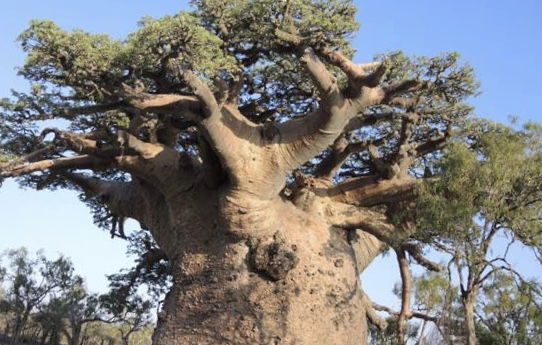Name Origin

Of the nine species, six are native to Madagascar, two are native to mainland Africa and the Arabian Peninsula, and one is native to Australia. The Glencoe baobab, a specimen of digitata in the Limpopo Province, South Africa, was considered to be the largest living individual. The tree has since split into two parts, so the widest individual trunk may now be that of the Sunland baobab, or Platland tree also found in South Africa. Baobab also has no clear tree rings as it grows, so it is not clear how old it is. Some experts say a baobab may live for 500 years, others for 5000 years.
In the wet months the baobab stores water in its thick, corky, fire-resistant trunk for the long dry period ahead. The water is tapped when drinking water becomes scarce, and from this tree, life is sustained in the arid months. Likely, this is the origin of the idea of a tree from which a river flows for the healing of the nations (Rev. 22:1-2), an image of the restoration of Paradise. The Baobab is one of the trees that Abraham’s ancestors likely had in mind when speaking of fruit-bearing trees. The bark is used for clothing, roofing material and rope and the leaves for condiments and medicines. The baobab’s fruit is called “monkey bread.”



